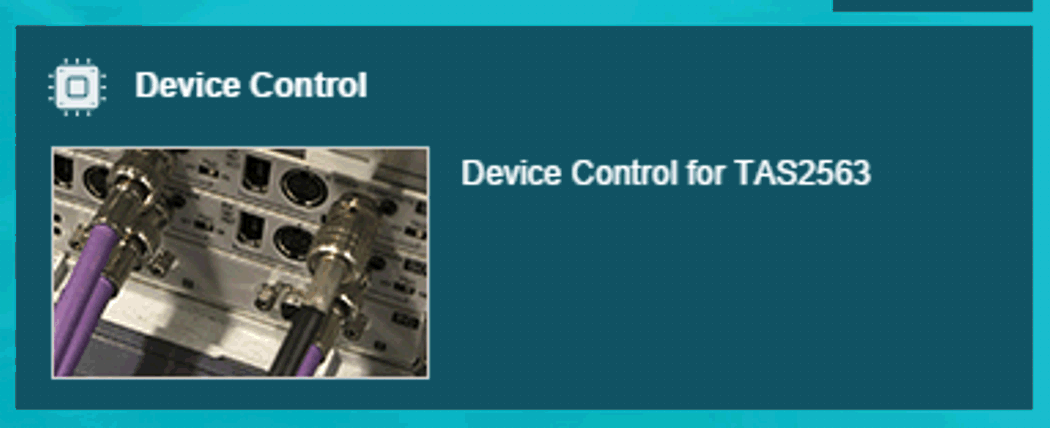SLAA936A September 2020 – March 2021 TAS2563
- Trademarks
- 1Introduction
-
2Quick Tuning Procedure
- 2.1 Initialize Tuning
- 2.2 Flatten Protection
- 2.3 Frequency Response Matching
- 2.4 Microphone Setup
- 2.5 Record Reference Device Response
- 2.6 Set Input Gain
- 2.7 Equalizer
- 2.8 Dynamic Range Compression (DRC)
- 2.9 Smart Amp Protection
- 2.10 Speaker Protection Verification
- 2.11 System Signal Chain
- 2.12 Tuning Elements
- 2.13 PDM MIC
- 3Related Documentation
- 4Revision History
2.11 System Signal Chain
Understanding the smart amp signal chain can be very helpful for optimizing sound level and quality while avoiding distortion or undesirable effects from overdriving the audio signal. This signal flow also facilitates the debugging of unwanted artifacts from the tuning. TI generally recommends to tune the speaker in the order consistent with the signal path. The gain stages in the chain are: host system gain, host preprocessing, input gain, EQ, DRC makeup gain, and the class-D gain.
Figure 2-12 shows the audio signal chain through the TAS2563.
 Figure 2-12 Smart Amp Signal Chain
Figure 2-12 Smart Amp Signal ChainVolume Control
The Volume Control is input signal. This gain stage has a dramatic effect on the output volume and sound quality. TI recommends to tune this first, especially for reference device matching, and then adjust this value at the end of tuning to help avoid distortion and over-compression. A value of a 0-dB gain is equivalent to bypassing this stage. The output of this gain stage feeds directly into the EQ.
EQ
The EQ is an optional block of the chain but the most influential part of speaker tuning. The broad spectrum input gain stage greatly influences the input to the EQ block, which is further limited by the DRC stage. The EQ is used to color and shape the general sound of the speaker output. TI recommends to tune this immediately after the input gain and with low-volume input signals as to avoid influencing the sound with the DRC and protection stages. This block feeds into the DRC stage.
DRC
The DRC is a highly-recommended (but optional) advanced feature of the smart amp. The Input to the DRC block comes from the output of the EQ block. The output feeds into the smart amp protection block.
Protection and feedback
The protection and feedback is a critical and final stage of the smart-amp-algorithm digital path used for speaker protection. This stage controls the final digital gain in three bands based on the input from the DRC and from the feedback path. If all other stages are bypassed, this stage continues to protect the speaker from overexcursion and overtemperature and also colors the output sound based on the priority settings.
Class-D Amp
The digital input to the class-D amplifier comes from the output of the DSP, specifically the speaker protection stage. The analog output of the class-D amplifier feeds to the device pin and then to the speaker. The designer can control the class-D amplifier parameters, which are listed under the home page of the GUI, using the Device Control tile (see Figure 2-13). TI does not recommend modifying any of the default settings found here, including the amplifier gain.
 Figure 2-13 Device Control GUI Tile
Figure 2-13 Device Control GUI TileSpeaker
The OUT pins of the smart amp device and the Class-D amplifier output feed the input to the speaker. The designer may place an optional ferrite bead in between the OUT pins and the speaker terminal.